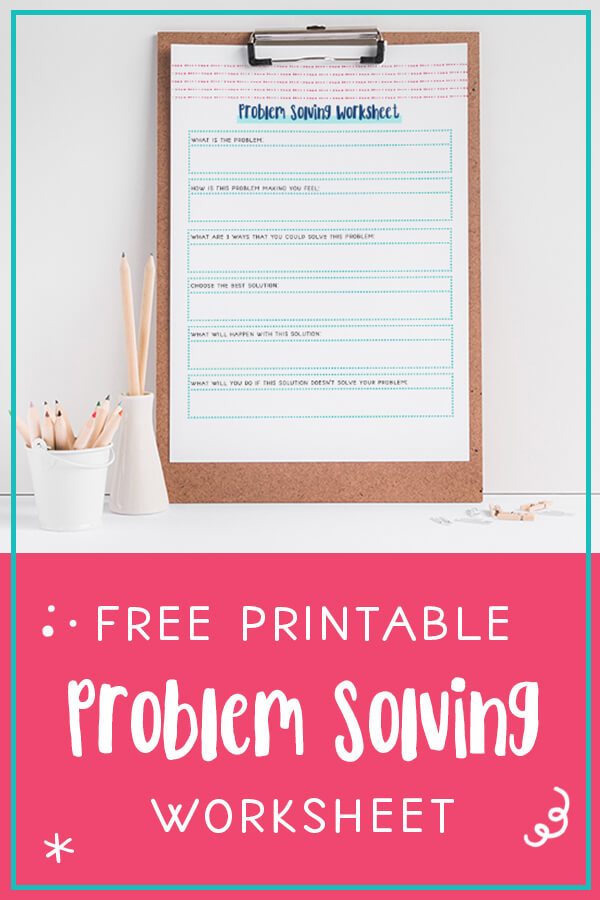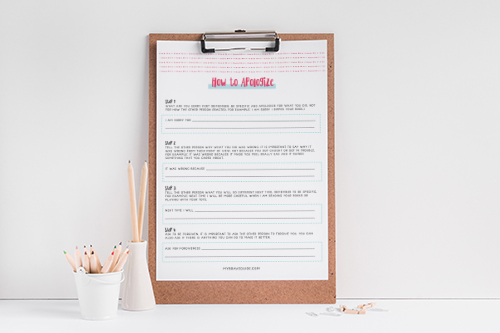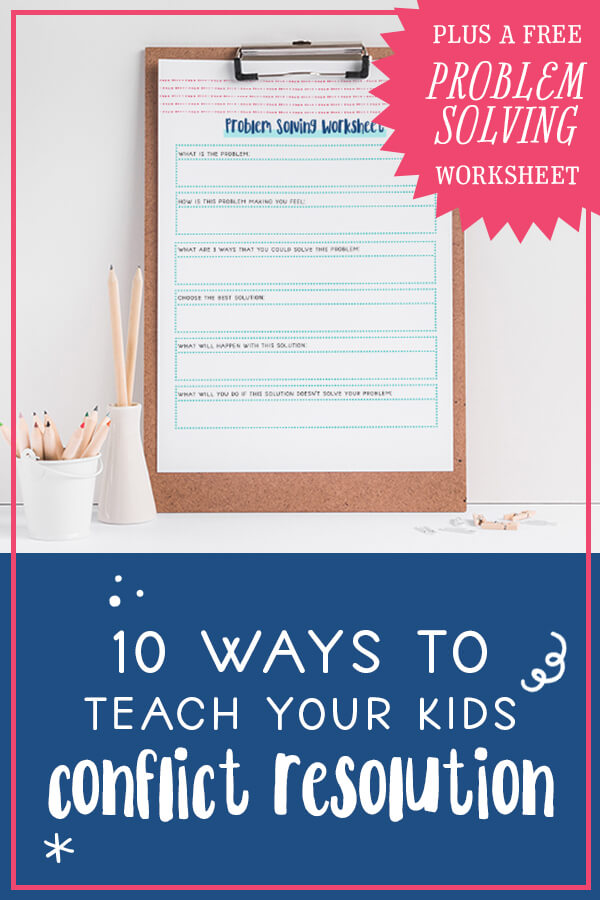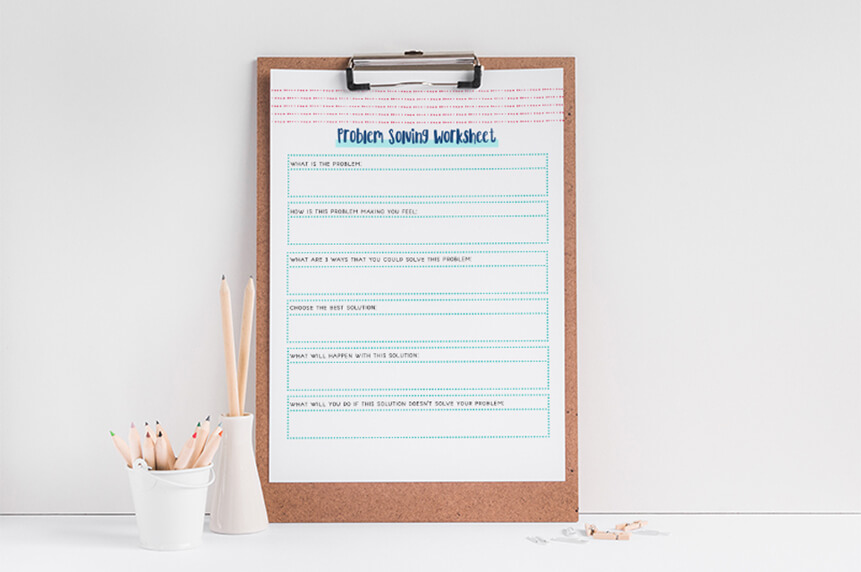Sibling rivalry, fighting with friends, or dealing with the mean kid in class can all be a huge challenge for kids. As a parent it can often be hard to know how to handle our children’s conflicts. Is it best to rush in and save the day, stay back and let them handle it, or find somewhere in the middle?
Of course, the answer so often depends on the situation. One thing that is definite though is that if we teach our children how to handle conflict, they will be better prepared to face situations at home, at school and in life as they grow up.
Here are 10 ways to teach conflict resolution to our children:
Teach Creative Resolution Skills:
There are so many options here including: brainstorming, taking turns, switch roles and argue for the opposite side, play rock paper scissors to determine which person gets to choose the solution, write down your argument as a letter or persuasive essay, and/or download and use this free problem solving worksheet in the Parenting Resource Library.

Teach Emotional Regulation and Stress Management:
When facing conflict, it is important to learn how to manage your emotions and keep your stress level down. Some good ways to teach this are, modeling calm emotions when facing conflict as a parent, teaching your children how to ask for and take a break when needed, and deep breathing exercises (check out this post on 5 deep breathing techniques for kids).
Teach Reflective Listening:
Reflective or active listening is an invaluable tool for adults and kids alike. Here is how to do it: Start by making eye contact with the person you are arguing with. Listen to what the other person is saying without interrupting. Repeat back to them what you heard them say and then ask something like, do I hear that correctly or do I understand?
Learning to listen in this manner will help your children to become more empathetic, understanding, and become better at finding solutions that work for them and the other person.
Teach Good Communication Skills:
Some children will need practice learning to speak up for what they want and need. Others will need practice in speaking calmly without blame or explosive amounts of anger. Becoming a good communicator is an essential skill for conflict resolution. Learning to be a good communicator is often best practiced outside of conflict.
Role playing is a great way to teach this skill. I like to introduce hypothetical situations to my kids in the car or at dinner and have them practice responding. When it is presented as a game, children enjoy learning these skills and they are able to directly transfer them the next time that they find themselves in conflict.
Teach Your Children to Recognize Feelings and Emotions (in themselves and others)
Again, this is a skill that takes practice both in conflict, and outside of conflict. For younger children, it can be very helpful to show them pictures of kids who are exhibiting emotions and discuss what emotions they are seeing.
It can also be helpful to teach them to name their own emotions. To do this, if you see them feeling really sad or angry, start by saying to them, “I see that you are feeling angry right now because your face is all red and you are stomping your feet.” Then, after naming an emotion a few times, the next time you see it, say something like, “I see that your face is all red and you are stomping your feet, what are you feeling right now?” and give them the chance to name their emotion.
It can also be very helpful to work on recognizing emotions in the midst of conflict. I find this especially helpful when my children are fighting with each other. Asking them to take a time out, or coming back to the argument after the fact, and describe what their sibling is feeling based off of what they are saying and what their body language is helps them to learn to recognize emotions going forward.
Teach I Statements:
Learning to argue with I statements is a very helpful tool. It takes out the sense of blame that can often be present in conflict and helps keep the argument in a constructive place. An example of an I statement would be, “I feel like you don’t care about my space when you come into my room without knocking.”
Teach Compromise and Sharing:
While these are skills that we often talk about in the preschool years, it is helpful to remember that we may need to continue to teach and facilitate these skills well into elementary school. Some great, neutral ways to teach sharing are setting a timer or dividing the resource or toy if possible. It is also good to encourage elementary aged children to start facilitating compromise on their own. I do this by saying something like, “I see that you both want to use the computer right now, can you guys come up with a solution to this problem that will work for both of you?”
Teach Children How to Forgive and Apologize:
Inevitably conflict will lead to occasional situations where an apology is necessary. It is imperative that we model this to our children by apologizing to them when we are wrong. We also need to encourage them to make meaningful apologies when they are in the wrong. This is generally best done after a little break/cooling off period rather than forcing them to say, “I’m sorry” when they are still angry and really don’t mean it. For a free worksheet on teaching apologies to kids, visit the Parenting Resource Library.

Teach Them to Set Ground Rules:
When facing conflict, especially at home or in a classroom, it is very important to have ground rules in place. These need to be set up at a neutral time and ideally, be made and agreed upon by everyone. Some examples of important ground rules include no name calling, no yelling, no fighting, kicking, hitting, etc. A family meeting is a great place to discuss ground rules for fighting.
Teach Them to Know When to Ask for Help:
Teaching children the difference between tattling and actually needing help is important. Some practical ways to do this are to use role playing, discussion, and in the moment teaching.
I also like to place this responsibility back onto my children at times. When they come to me with a problem with their sibling, for example, I will often say something like, “are you needing some time to vent about what is going on or are you needing help finding a solution?” At least half the time, they just want someone to vent to and they know that they are able to come up with a solution on their own.


